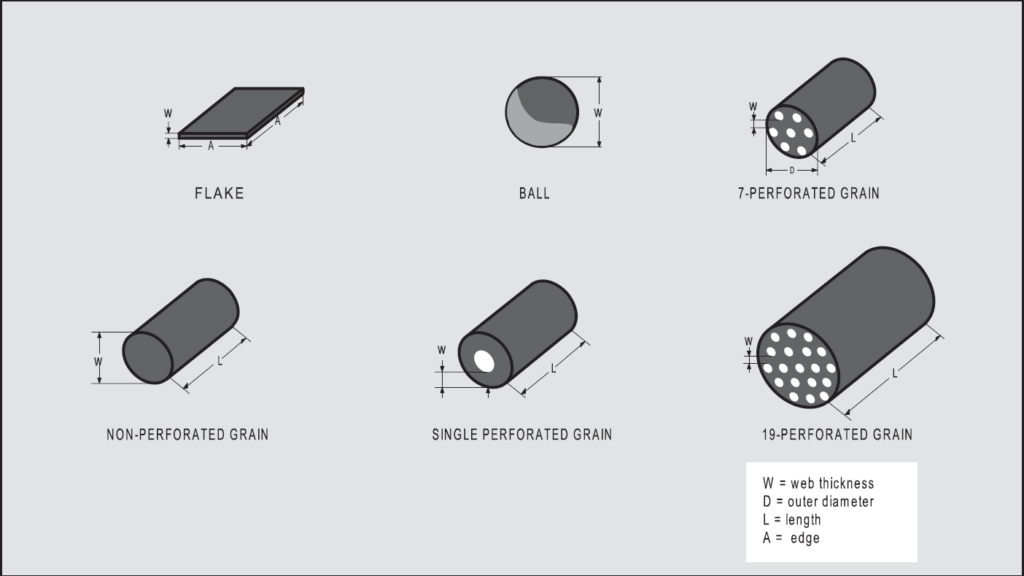|
|
There have been many
types of gunpowder throughout history,
starting with the classic black powder
and ending with the modern smokeless
powder, which avoids many of the
problems that could occur from using other
powders. Some of these problems included
fouling up the firearm, burning too quickly
and causing an explosion, and hazardous
manufacturing requirements.
It can also be important
to know the shape of the powder grain,
how it effects combustion, and how easily it
can be measured out (or metered).
Flake Powder:
Usually used in shotgun rounds, this grain
shape can be difficult to predict as it
can end up stacking when being measured
out and be less uniform in the bullet
casing.
|
Ball Powder: Most commonly
used in automatic firearm rounds, this grain
is relatively inexpensive to manufacture and
is easy to accurately meter and can settle
uniformly in the casing.
Stick Powders: This cylindrical grain
is most popular for rifle rounds but is the
most difficult to meter properly. These can
also break while measuring, leading to
inconsistencies in the powder.
Multi-perforated Grains: These
stick powders are designed with a number of
holes going from one end to the other in
order to increase the surface area,
increasing the speed of combustion. The more
perforations the grain has, the larger the
grain is. These types of powders are usually
used for large caliber ammunition.
|

From: https://www.vihtavuori.com/tech-blog-powder-grain-shapes/
|